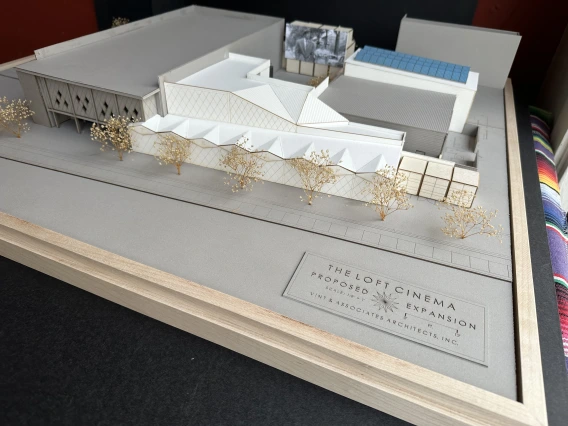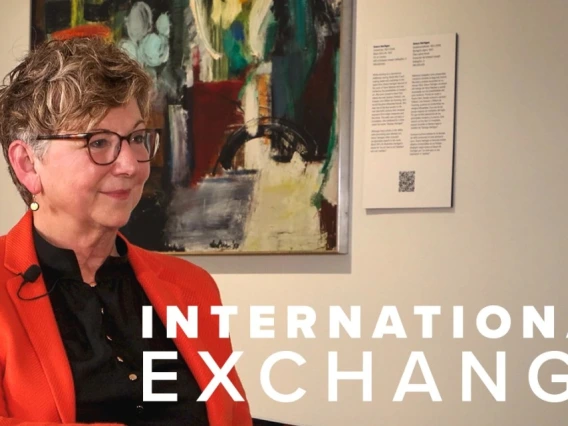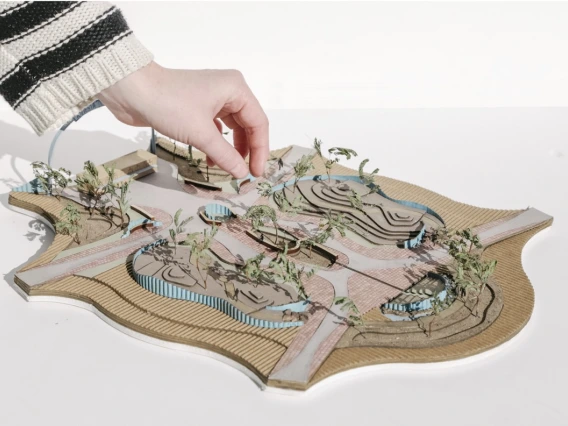We're at a 'heat-shed moment,' researcher Ladd Keith says of University's world-class heat expertise
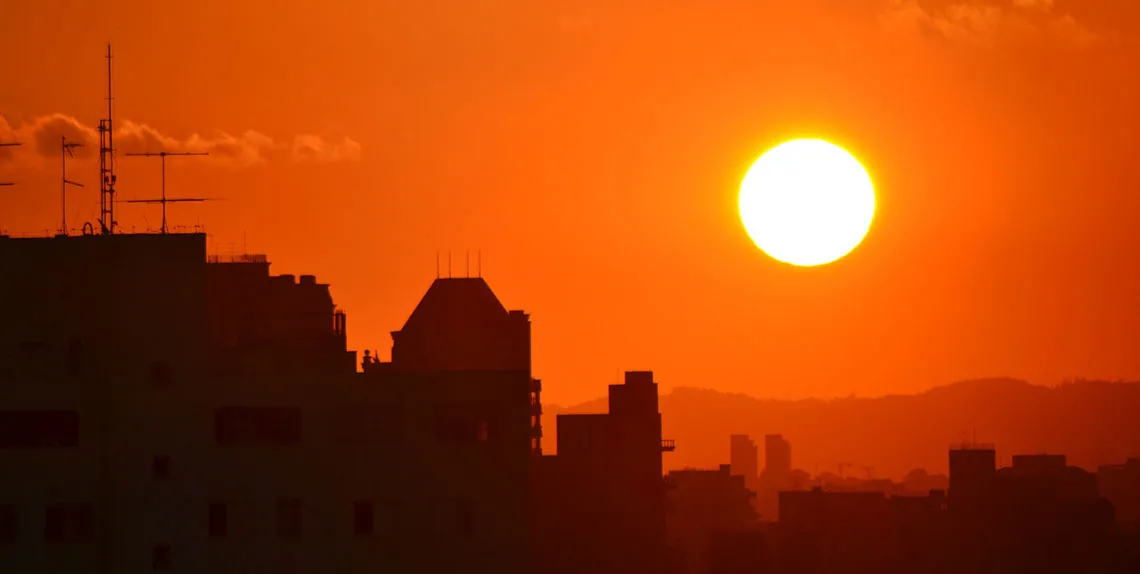
For many working on the main campus, summer at the University is perhaps best defined by two things, one aspirational and one reliable: a slightly slower pace of work and brutally hot temperatures.
Increasingly over the last 10 summers, Ladd Keith has counted on only one of those things, and it isn't slower work.
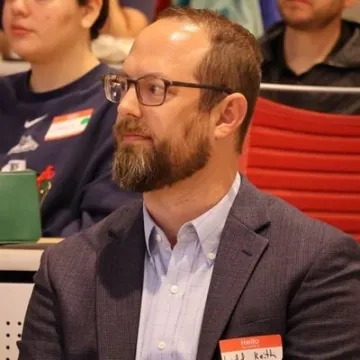
Ladd Keith, Associate Professor of Planning and Sustainable Built Environments.
Keith is an associate professor in the School of Landscape Architecture and Planning and an expert on how cities manage and mitigate the effects of extreme heat. He spends most summers raising awareness of the risks of extreme heat and helping translate science into actionable policies for governments to keep their communities cool and safe.
Which is to say: Summers are Keith's busy season.
Keith's work is becoming increasingly valuable. Last year, heat-related deaths in Arizona reached 987, a record high. In Phoenix specifically, heat-related deaths in 2023 were up 52% over 2022. But the problem is global, Keith said, pointing to a May report by Climate Central that concluded human-caused climate change was a major factor in extreme heat around the world over the last year.
Extreme-heat events are also more intense and longer-lasting, Keith added. A recent heat wave in Mexico likely killed more than the official count of 125 people and was made 35 times more likely to happen due to climate change, according to a report, on which Keith was a co-author, published by the World Weather Attribution, a global collective of climate scientists. But governments across the U.S. and around the world have only recently begun to seriously consider ways to prevent the harmful and deadly effects of heat. Heat governance, as it's called, is slowly being adopted and implemented by governments across the country.
Last month, it was announced that Keith will lead the University's involvement in the new Center for Heat Resilient Communities, which is part of a federal initiative aimed at translating climate research into policies and guidelines.
In this Q&A, Keith explains what heat governance is and why the University of Arizona may be at a "heat-shed moment" for heat research – uniquely positioned to be a leading institution.
Given all the evidence that extreme heat is here to stay, can you explain what heat governance is, how it's been taking shape nationally, and how we're approaching it in Arizona?
Our federal government has been addressing other climate hazards for quite a while, such as flooding, wildfires, drought. And although heat is the key fingerprint of climate change, it's really the last impact of climate change that we've been taking seriously. We still only have three local chief heat officers in the United States – in Miami-Dade County in Florida and in Phoenix and Los Angeles – even though we have over 19,000 communities. It's a start, but we still have a long way to go to make sure that every community is protected from the effects of extreme heat.
Specifically for Arizona, we've seen a couple of really exciting developments putting us at the forefront nationally as a leader in heat governance. Gov. (Katie) Hobbs declared a heat emergency last year that led directly to the state adopting its extreme heat preparedness plan, and now we have in place the nation's first state-level chief heat officer, as well as the nation's first state-level cooling center coordinator. The folks in the Arizona Department of Health Services have been really critical to bolster the support for places like Phoenix and Tucson, but also bring up awareness and capabilities for addressing extreme heat across the whole state, particularly in smaller cities and rural areas that have traditionally received a lot less attention.
The term "resilience" is used a lot in these discussions. What are we trying to convey about extreme heat by using that word?
With the idea of heat resilience, we really want to convey that it's a process, not a specific outcome. You don't become heat resilient and then you're done with planning; you're not immune to all future impacts. What we're looking at is a future that will be increasingly hot, with increasing impacts from extreme heat. So, we need to continue this heat resilience process over time, learn from what's working, and adjust our actions as conditions change.
Another really important component of resilience is equity – making sure that all of society is benefiting from these actions, and that we're including folks that have historically been marginalized or received less attention through public funding and ensure that their outcomes are increasingly better as well. We want to make our communities more livable, to bounce forward and improve the quality of life while we're planning for heat, right? So, it's not just about maintaining the status quo – it's improving things as well.
Can you talk about some of the research happening at the University that's helping the world better understand how to mitigate the effects of extreme heat?
The University of Arizona is a clear leader of heat research in the world, and we have a number of federally funded research programs from different agencies that are helping us address this topic from a variety of angles. One of the recent awards that we received is the U.S. National Oceanic and Atmospheric Administration-funded Center for Heat Resilient Communities. That's a partnership with UCLA and Arizona State University, focused on supporting a cohort of 30 communities across the nation to become more heat resilient. The heat resilience framework will then be turned around and made publicly available to all communities in the United States, and across the world, to take advantage of the best practices and guidelines that we're developing.
Another exciting program is the U.S. Department of Energy-funded Southwest Urban Corridor Integrated Field Laboratory, or what we call the Southwest IFL. That's a partnership between us, ASU, NAU, several national laboratories and IBM. With this program, we're piloting our first intensive observation period this summer and have a number of on-the-ground research activities going on across the state, bringing climate trucks to do readings to improve our understanding of urban heat in neighborhoods across Arizona, particularly those that are more vulnerable to the effects of extreme heat.
Many institutions are only just now starting to research heat. But we're already an early leader in it because we're in a historically hot region, we have a strong foundation in climate research, and we're a land-grant institution that excels at translating science to address the needs of our state. If there was a watershed moment for when the U of A became a leader in water research, I think we're at that cusp of a "heat-shed moment," where we could be the world-class leader in heat research. So, it's an exciting time to be working on it.
You're not just a heat governance expert but also a lifelong Tucsonan trying to raise a family in this changing climate. How do you stay cool?
I think many of us in Tucson are already doing what is needed, right? When we can, we shift activities to cooler parts of the day. We're lucky to live in a place where heat awareness has really been raised in recent years For example, summer camps for children already have many protective measures: making sure they're shaded, not letting the kids go outside and play when it's hotter than normal, making sure that everyone has hydration and sunscreen.
I think a lot of those measures are already in place in Tucson. But I would also encourage everyone to keep an eye on alerts from the National Weather Service and the Arizona Department of Health Services, which now allows you to sign up for their alerts. As we get increasingly hot, make sure that you don't take for granted that any of us could be at risk based on our activities. We can all also try to watch out and take care of our family members, neighbors and community members who may be more vulnerable to extreme heat.
Article originally appeared on UArizona News.

